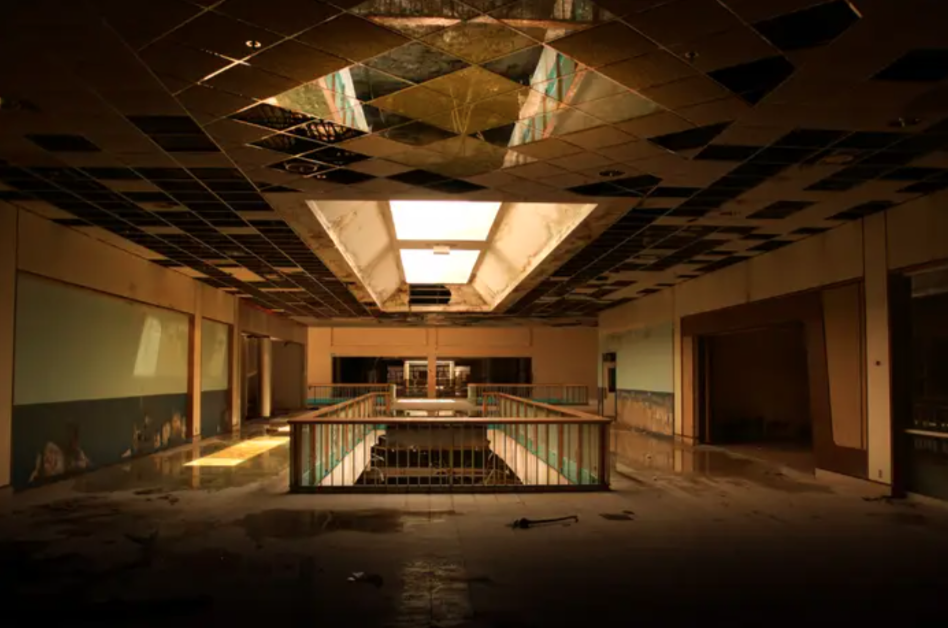Metro North Mall: A Look Back at Kansas City's Iconic Shopping Destination
Metro North Mall, a once-popular shopping center, opened its doors in September 1976. Spanning across 1.3 million sq. ft. of retail space, the mall featured 125 storefronts and 4 anchor stores on two levels. Visitors were greeted by a stunning center court area with a stage surrounded by a pool of water, and four mini hot-air balloons suspended from the ceiling that floated up and down.
While there was no designated "eatery" location, the mall had a logical entertainment end with two restaurants, a six-screen AMC theater, and an arcade. During holiday seasons, the mall management organized usage of parking trams from Worlds of Fun to accommodate the influx of customers.
By 1990, the mall's popularity had increased, leading to the construction of several restaurants at the property's border. AMC also built a second six-screen theater directly behind the mall. However, in 2000, the mall owners began developing a competing set of strip malls, Zona Rosa. They increased leases at Metro North, leading clients to move to the new location. The former Montgomery Ward store closed in 2001, followed by both AMC theaters and JCPenney. Dillard's converted to a clearance center in 2007 and later left the mall in 2008 for a new location in nearby Zona Rosa. MC Sporting Goods operated as a junior anchor until it closed in 2009, leaving Macy's as the sole store.


















In 2007, redevelopment plans were released, citing turning Metro North into an outdoor lifestyle center. However, the plans fell through due to the recession and the death of the mall owner. In 2010, new redevelopment plans emerged to revitalize the shopping center that by this time had fallen to 17 percent occupancy with only one remaining anchor. These plans called for the majority of the mall to be torn down and replaced by a smaller enclosed mall, which will incorporate mixed uses in addition to the standard shopping mall.
The redevelopment of the mall faced setbacks, but new announcements arose in May 2013, indicating that the mall would be replaced with a smaller, one-level enclosed mall featuring two anchor stores. In April 2014, the mall was shuttered, leaving only two inline stores: GNC and The Wig Shoppe. Macy's, the sole surviving anchor store, remained open. In March 2015, IAS Partners Ltd. acquired the shopping center with plans to replace the enclosed mall with a new open-air center featuring local and national retailers, multifamily housing, and maybe office spaces.
In August 2016, redevelopment plans by property owner Metro North Crossing LLC received the necessary re-zoning to demolish and replace the existing mall structure with a mixed-use site including retail, office, restaurant, hotel, and residential spaces. The team planning for the redevelopment of Metro North Mall was responsible for the Antioch Crossing and Blue Ridge Crossing projects that replaced other indoor malls in the Kansas City area with a similar mixed-use design. In November 2016, images of the mall's interior, showcasing its rapid deterioration since its closure, went viral. Known for photographing urban decay, Seph Lawless described Metro North Mall as "the creepiest mall I've been in."
Today, a T-Shotz outdoor golf range and entertainment center sits on the property that Metro North previously occupied.
If you enjoyed this article, you’ll love Stories from the City: the exclusive newsletter from KC Yesterday. Sign up now to unlock fascinating stories from Kansas City about the mafia, architecture, prohibition, sports, and everything in between!
Photos courtesy Seph Lawless.




